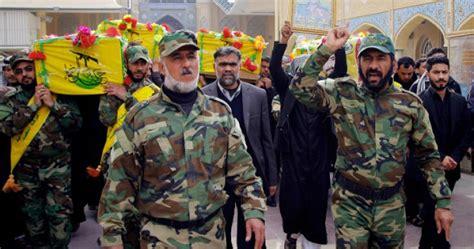
Profiles of 15 Iranian-Backed Militias in the Middle East
DESCRIPTION
Since the founding of the Islamic Republic of Iran in 1979, the Iranian regime has worked to establish proxies and co-opt allies to expand its influence in the Middle East and oppose Israel, the U.S., and enemy Arab regimes throughout the region. In the current war between Israel and Iranian proxies and allies in Gaza, the West Bank and Lebanon, these militias can serve as a strategic reserve and force multiplier for Iran.
Iran’s Islamic Revolutionary Guard Corps – Quds Force (IRGC-QF) has had remarkable success in establishing Hezbollah in Lebanon and Palestinian Islamic Jihad in Gaza and the West Bank, as well as supporting Hamas. These groups have received weapons, training, funding, and safe haven from Iran, and in turn, have worked to destabilize Israel, with the ultimate goal of the destruction of the state.
Saraya al-Mokhtar
Saraya al-Salam (Promised Day Brigade)
Saraya Wa’ad Allah
Iran’s support for Hezbollah, Hamas, and Palestinian Islamic Jihad is well known, but lesser known is Iran’s long-term project of building and co-opting militias in Iraq, Syria, Yemen, Bahrain, and Saudi Arabia. Additionally, Iran has recruited Shia militiamen from Pakistan and Afghanistan to fight in Syria.
Groups like the Badr Organization have served as Iranian proxies since the Iran-Iraq war in the 1980s. After the U.S. invasion of Iraq in 2003, IRGC-QF expanded its militia-building project when it co-opted the Mahdi Army, a Shia militia run by Muqtada al-Sadr, the son of an influential Shia cleric. The IRGC, with the support of Hezbollah, established several new militias, such as Asa’ib Ahl al-Haq and Hezbollah Brigades, which were offshoots of the Mahdi Army and commanded by senior Mahdi Army commanders.
The relationship between these militias and the IRGC is incestuous. The U.S. government described the commander of Hezbollah Brigades, Abu Mahdi al Muhandis, as a Quds Force officer. Other militia commanders have sworn to unquestionably follow the orders of Iran’s Supreme Leader. The IRGC armed, trained, and funded these militias, as well as gave them safe haven on Iranian territory. During the U.S. presence in Iraq, from 2003 to 2011, more than 600 American soldiers were killed by these Iran-backed militias in complex attacks, ambushes, and IED and EFP attacks.
In 2014, as the Islamic State took control of large swathes of northern, central, and western Iraq, as well as Syria, Iran expanded its militia building project. Several new militias were founded, and some, such as Kata’ib Sayyid al-Shuhada, the Imam Ali Brigades, and Harakat Hezbollah al Nujaba, were offshoots of Asa’ib Ahl al-Haq and Hezbollah Brigades, and led by key commanders within the latter groups. Sadr’s Mahdi Army morphed into the Promised Day Brigades and the Peace Brigades, while new groups such as Saraya al-Khorasani, was formed by an IRGC officer. Over the course of two decades, these militias have become experienced and battle hardened while fighting against the U.S. military, the former al-Qaeda in Iraq, the Islamic State, and Syrian rebel groups.
Iran has co-opted or created militias in Yemen and Bahrain. Ansar Allah, more commonly known as the Houthis, is a powerful militia in Yemen that controls much of the northern part of the country, including the capital of Sana’a. It is the only Iran-back militia with an arsenal of medium range cruise and ballistic missiles capable of targeting Israel. In mid-October 2023, the Houthis fired several missiles at Israel, forcing a U.S. destroyer to shoot them down.
The IRGC has also created, supported, or co-opted several militias in Bahrain. Some of these militias have launched attacks in Bahrain as well as fought against the Islamic State in Iraq, and have received training from Hezbollah. Others have reportedly fought against the Saudi government in Saudi’s restive eastern Qatif Region.
Source » longwarjournal.org





